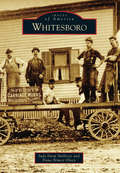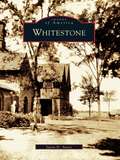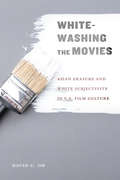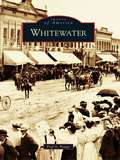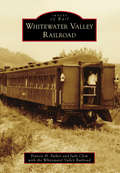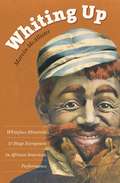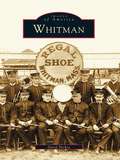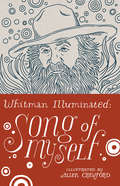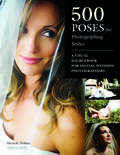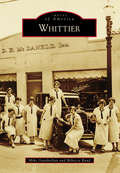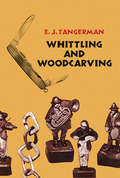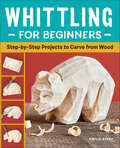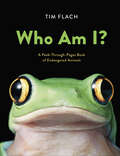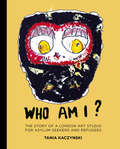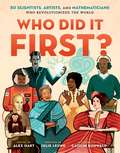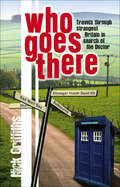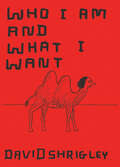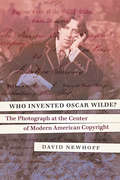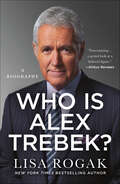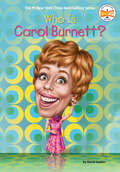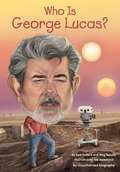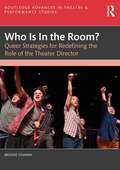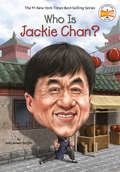- Table View
- List View
Whitesboro
by Dana Nimey Olney Judy Harp MallozziThe fertile farmlands of the Mohawk Valley brought the first settlers to Whitestown, founded by Hugh White in 1784. Abundant water was available to service mills and to provide a means for shipping goods from the existing knitting mills, cheese factories, iron works, and lumberyards of Whitesboro, a village of Whitestown. Irish immigrants settled into Whitesboro after building the Erie Canal, while German immigrants brought their carpenter talents to build furniture, such as the famous Quigley rolltop desk. The Dutch sought out Wybo E. Wind, the Dutch baker who employed many in his bakery, and because of the large number of Welsh immigrants in Remsen, there was a big spillover into Whitesboro. Among the first things sought by those visiting the area is Whitesboro's diverse cuisine, boasting some of the best Italian, Greek, and Lebanese dishes, all brought by immigrants. Whiteboro's proximity to the Adirondacks allows residents to enjoy camps, summer homes, swimming, and winter activities. The rolling hills and beautiful scenery are part of the charm that still attracts people to the area today.
Whitestone
by Jason D. AntosWhitestone was named after a large limestone boulder found in 1645 by the Dutch on the virtually flat seashore. The Dutch recognized the great potential to establish the town as a major trading port due to its location by the East River. They purchased the town from the Matinecock tribe, who had been living on the fertile land, for the price of one ax for every 50 acres. The town prospered, and the population grew. In 1898, Whitestone became a part of New York City, and the area experienced a real estate boom. Beautiful estates and private homes sprung up overnight. Celebrities from the golden age of cinema, such as Mary Pickford, Charlie Chaplin, and Rudolph Valentino, established homes in the area. After becoming a major hub for the Long Island Railroad, Whitestone became the home of the famous Whitestone Bridge, which is regarded as the greatest suspension bridge ever built. Through historic photographs, Whitestone chronicles this town's transformation from a quiet Dutch settlement to a massive urban center.
Whitetail Tactics: Cutting-Edge Strategies That Work (Lyons Press Ser.)
by Peter J. FiducciaWhitetail hunters familiar with Peter Fiduccia’s books, articles, seminars, and television shows know that he offers straightforward, practical, cutting-edge deer hunting advice and down-to-earth commentary. His observations and analysis will help take anyone’s deer hunting skills to the next level.Here, Fiduccia shares his extensive knowledge of whitetail behavior. His time-tested advice is intended to benefit those who "hunt deer under the real-world conditions of heavily hunted areas,” says Fiduccia. If you hunt deer on pressured lands, these tactics are meant to give you an edge over other hunters and help you get a buck when others can’t.Whitetail Tactics contains no-nonsense strategies and subjective insights into many aspects of deer hunting that are rarely discussed. Throughout these pages, Fiduccia shares a lifetime of successful deer hunting experiences about the animal he has hunted throughout North America. This instructive and entertaining book is filled with color photos that will both inform and entertain readers.Passionately expressed, the author shares his most guarded secrets and progressive strategies to help all deer hunters-from seasoned veterans to novices-consistently take mature bucks in heavily hunted areas. Whitetail Tactics is a must-have book for your deer hunting library.
Whitewashing the Movies: Asian Erasure and White Subjectivity in U.S. Film Culture
by David C OhWhitewashing the Movies addresses the popular practice of excluding Asian actors from playing Asian characters in film. Media activists and critics have denounced contemporary decisions to cast White actors to play Asians and Asian Americans in movies such as Ghost in the Shell and Aloha. The purpose of this book is to apply the concept of “whitewashing” in stories that privilege White identities at the expense of Asian/American stories and characters. To understand whitewashing across various contexts, the book analyzes films produced in Hollywood, Asian American independent production, and US-China co-productions. Through the analysis, the book examines the ways in which whitewashing matters in the project of Whiteness and White racial hegemony. The book contributes to contemporary understanding of mediated representations of race by theorizing whitewashing, contributing to studies of Whiteness in media studies, and producing a counter-imagination of Asian/American representation in Asian-centered stories.
Whitewater
by Fred G. KraegeThe city of Whitewater was named for the soft, white clay that lined the stream flowing through the area. Later it claimed the motto "the Banner Inland City of the Midwest" and, after that, "Whitewater, the City Beautiful" for its stately homes and large, graceful trees. Samuel Prince, the first settler, erected a cabin on his claim of 60 acres in 1837; a gristmill, sawmill, paper mill, and numerous stores were soon established in this rich agricultural area. The railroad came, and the manufacturing of the Esterly Grain Harvester and the Whitewater Wagon made Whitewater an industrial town. In 1868, the state's second normal school--later the University of Wisconsin-Whitewater--located here, further changing the town's character.
Whitewater Valley Railroad (Images of Rail)
by Whitewater Valley Railroad Francis H. Parker Judy ClemThe Whitewater Valley Railroad is a historic line in scenic southeastern Indiana. It was completed to Connersville in 1867, linking the towns of the Whitewater Valley to Cincinnati over the former towpath of the Whitewater Canal (1836-1862). Originally named the White Water Valley Railroad, the line went through several name changes before being absorbed by the Cleveland, Cincinnati, Chicago & St. Louis (the "Big Four") in 1890 and later by the New York Central, the parent company of the Big Four. After merging with the Pennsylvania Railroad in 1968, the line became the Penn Central before closing in 1972 between Brookville and Connersville. It was slated for abandonment when a group of volunteers stepped in to create the Whitewater Valley Railroad, which ran its first tourist passenger trains in 1974. The nonprofit volunteer organization celebrates its 40th anniversary of operations in 2014.
Whiting Up
by Marvin McallisterIn the early 1890s, black performer Bob Cole turned blackface minstrelsy on its head with his nationally recognized whiteface creation, a character he called Willie Wayside. Just over a century later, hiphop star Busta Rhymes performed a whiteface supercop in his hit music video "Dangerous." In this sweeping work, Marvin McAllister explores the enduring tradition of "whiting up," in which African American actors, comics, musicians, and even everyday people have studied and assumed white racial identities. Not to be confused with racial "passing" or derogatory notions of "acting white," whiting up is a deliberate performance strategy designed to challenge America's racial and political hierarchies by transferring supposed markers of whiteness to black bodies--creating unexpected intercultural alliances even as it sharply critiques racial stereotypes. Along with conventional theater, McAllister considers a variety of other live performance modes, including weekly promenading rituals, antebellum cakewalks, solo performance, and standup comedy. For over three centuries, whiting up as allowed African American artists to appropriate white cultural production, fashion new black identities through these "white" forms, and advance our collective ability to locate ourselves in others.
Whitman (Images of America)
by David HickeyMost commonly known as the home of the world-famous Toll House cookie, Whitman has a rich history that goes well beyond the cookie jar. Centrally located between Boston and Cape Cod, the town played a significant role in the formative years of the country. Early industries included various mills, foundries, and tack factories; later industry was defined by prosperous shoe manufacturing, as Whitman was home to many of the country's largest shoe factories. Whitman takes the reader on a trolley ride through the quaint center, which still evokes that small-town feeling, and the town park, which was designed by legendary architect Frederick L. Olmstead. Through more than two hundred photographs, this nostalgic tour shows the schools, churches, commerce, and the lives of Whitman residents, all of which bring back memories of a simpler time.
Whitman Illuminated: Song of Myself
by Walt Whitman Allen CrawfordWalt Whitman's iconic collection of poems, Leaves of Grass, has earned a reputation as a sacred American text. Whitman himself made such comparisons, going so far as to use biblical verse as a model for his own. <P><P>So it's only appropriate that artist and illustrator Allen Crawford has chosen to illuminate-like medieval monks with their own holy scriptures-Whitman's masterpiece and the core of his poetic vision, "Song of Myself." Crawford has turned the original sixty-page poem from Whitman's 1855 edition into a sprawling 234-page work of art. The handwritten text and illustrations intermingle in a way that's both surprising and wholly in tune with the spirit of the poem-they're exuberant, rough, and wild. Whitman Illuminated: Song of Myself is a sensational reading experience, an artifact in its own right, and a masterful tribute to the Good Gray Poet.
Whitman Illuminated: Song of Myself
by Walt Whitman Illustrated by Allen CrawfordContaining numerous contemporary images by leading photographers, this indispensable manual concerning wedding portraits explains posing fundamentals as well as how to create a flattering, feature-specific photograph--one that focuses on the head, shoulders, arms, legs, or torso--in different levels of close-ups, from head-shots to full-lengths.
Whittier (Images of America)
by Michael Garabedian Rebecca RuudWhen Quaker colonists arrived in Southern California in 1887 to establish their "ideal city of dreams" between the San Gabriel River and the base of the Puente Hills, this land already had a storied past. It was once a place where native Tongvans gathered, the site of Spanish land grant holder Manuel Nieto's rancho, and home to the mansion of the last governor of Alta California, Pío Pico. Named by the early settlers after the abolitionist poet, "Ye Olde Friendly Towne of Whittier" grew from a small colony of Quaker pioneers to a bustling center for the production of citrus, walnuts, and avocados. After incorporation in 1898, Whittier also became a flourishing suburb connected to Los Angeles via the Pacific Electric trolley; the home of Whittier College, celebrated for its academics and the mascot Johnny Poet; and home to several notable Americans, including the 37th president of the United States.
Whittling and Woodcarving
by E. J. TangermanThroughout the ages one of the most popular ways to direct the creative urge has been whittling or woodcarving. In this volume Mr. Tangerman, one of America's foremost authorities and craftsmen, whose articles in craft magazines have taught and inspired millions, presents a full and thorough introduction to this entertaining art form. With this book, which is one of the few works that bridge the gap between whittling and serious carving, a beginner who is moderately handy can whittle or carve scores of useful objects, toys for children, gifts, or simply pass hours at applying his ingenuity to wood.Beginning with a history of whittling and woodcarving, the book progresses gradually and easily. The first chapters supply background information on different woods, their proper selection and possible uses, selection and care of knives, and ways of using tools, including grips, types of strokes and cuts, and simple exercises. The following chapters cover rustic work, flat toys and windmills, puzzles, chains, nested spheres, fans, joints, modeling ships in bottles, and caricatures. The second half of the book covers carving proper and describes simple lines, woodcuts, low-relief pierced designs, sculpture in the round, inlay and marquetry, lettering, indoor and outdoor decorations, and styles. The final chapter describes finishing, repairs, and the care of tools. The wide range of illustrations includes both hundreds of beautiful wood objects from the great art of the world and hundreds of modern projects, many of which are contest winners."Mr. Tangerman guides actual working, but his tone of direct address, such as a teacher would use in speaking to a pupil or a class of intelligent pupils, makes it easy as well as instructive reading." -- New York Herald Tribune Books. "A fascinating book, giving many suggestions of what to make and how to make it, ranging from simple things to intricate ones." -- Horn Book Magazine.
Whittling for Beginners: Step-by-Step Projects to Carve from Wood
by Emilie RigbyYour go-to guide for getting started with whittling!Are you thrilled by the thought of hand carving wood into rugged, rustic pieces to decorate your space or give as gifts? Then you've come to the right place. Whittling for Beginners walks you through the tools, techniques, and materials you need to whittle everything from a butter spreader to a garden gnome to a full chess set!Beginner wood carving — Start from scratch with guidance on choosing your knives, sourcing your wood, and whittling safely.Learn the fundamentals — Find step-by-step instructions for the most common cuts and finishing techniques, so you can build the basic skills to whittle almost anything.24 woodworking projects to try —This whittling book includes 24 projects that progress in complexity along with your knowledge—begin with a super-simple magic wand and work your way up to detailed animal figurines!Pick up a relaxing new hobby today with this wood carving book for beginners.
Who Am I?: A Peek-Through-Pages Book of Endangered Animals
by Tim FlachWho is that peeking through the page? Is it a giant panda munching on bamboo? Or perhaps a yellow-eyed tree frog hiding in a tropical forest? Who Am I? uses clever riddles and stunning images by esteemed photographer Tim Flach (taken from his Abrams adult book Endangered) to introduce ten vital species-at-risk to readers. With its engaging and timely message, this beautifully crafted picture book is perfect for the youngest animal enthusiasts.
Who Am I?: The story of a London art studio for asylum seekers and refugees
by Tania KaczynskiWhen everything is lost, imagination is the only place of true freedom. The New Art Studio, co-founded in 2014 by art psychotherapist Tania Kaczynksi, is a unique space in London set up as a lifeline for refugees and asylum seekers so they can experience art therapy in a relaxed, informal atmosphere. Who Am I? is a poignant look at the state of the dispossessed, and at how creating art can provide a last bastion of hope for those who have lost everything. Alongside the unique and touching artwork of the studio’s members are their true stories of bravery, loss and redemption.
Who Can Make Art? (Into Reading, Level S #25)
by Pamela Rushby Rosalie StreetNIMAC-sourced textbook
Who Did It First? 50 Scientists, Artists, and Mathematicians Who Revolutionized the World: 50 Scientists, Artists, And Mathematicians Who Revolutionized The World (Who Did It First? #1)
by Julie LeungA boldly illustrated and fascinating collection of profiles featuring the women and men who were pioneers of science, technology, engineering, the arts, and mathematics.You likely know that Mae Jemison was the first African American woman in space. And maybe you know that Jane Goodall was the first human accepted into a chimpanzee community. But you might not know that Alan Turing was the first person to introduce the concept of artificial intelligence. Or that Tu Youyou was the first Chinese woman to win a Nobel Prize. Who Did It First? 50 Scientists, Artists, and Mathematicians Who Revolutionized the World brings together all of these trailblazers into one stunning package. With both well-known figures and lesser-known heroes, editor Alex Hart, writer Julie Leung, and illustrator Caitlin Kuhwald celebrate the inspiring innovators who braved uncharted waters to pave the path for future generations.Perfect for fans of Little Leaders, Women in Science, and Rad Women Worldwide, Who Did It First? makes a wonderful gift for any occasion and is a must-have for every young reader’s library.Featuring Ada Lovelace, Mindy Kaling, Temple Grandin, Maria Tallchief, Riz Ahmed, and many others.
Who Goes There: Travels Through Strangest Britain In Search Of The Doctor
by Nick GriffithsThe author of Dalek I Loved You charts his travels through England and Wales tracking down locations used in Doctor Who, both classic and new. Being an odd kind of show, Doctor Who&’s locations too are odd. This is no glamorous trip. Dungeness Nuclear Power Station, anyone? A flooded china clay pit in Cornwall? As he travels, so Nick Griffiths discovers another side to his well-trodden country, which is no less evocative. Then he goes to the pub. As in his previous memoir Dalek I Loved You, the travel writing is backed up by Nick&’s childhood reminiscences and contemporary musings. A companion website offers photographs from the trip, a Google map of the locations, and details of the nearest pub. In this innovative way, readers are invited to follow in his footsteps. Who Goes There isn&’t just for Who fans, it&’s a very funny book for anyone who fancies a trip off the beaten path. Praise for Dalek I Loved You &“A very funny book for anyone who grew up wearing Tom Baker underpants. I know I did.&”—David Tennant &“An unadulterated nostalgia-fest written with fun, wit and love.&”—Doctor Who Magazine &“He conjures up just how mind-blowing it was for an ordinary suburban kid to be transported to a realm of danger and rampant sci-fi imaginings.&”—Financial Times &“If I am getting carried away, it is the fault of Griffiths&’s awfully charming memoir of boyhood and Doctor Who, with its deft evocations of eight-year-old invincibility and embarrassing school discos as well as arguments about Cybermen vs Autons or Jon Pertwee vs Tom Baker. Griffiths&’s chatty, self-deprecating style is disarming.&”—The Guardian
Who I Am and What I Want
by David ShrigleyThe internationally acclaimed pop artist offers his dementedly clever perspective on everything from dolphins, boredom, and beer to supernatural forces.With deadpan humor and unsettling imagery, Scottish pop artist David Shrigley’s scrawls from the subconscious have earned him major gallery showings and legions of fans. In this mock autobiographical collection, his mischievous drawings capture life’s anxieties and ambitions from the mundane to the surreal. Seductively strange and addictively amusing, this edgy book welcomes the uninitiated and rewards the faithful.
Who Invented Oscar Wilde?: The Photograph at the Center of Modern American Copyright
by David NewhoffIn early 1882, before young Oscar Wilde embarked on his lecture tour across America, he posed for publicity photos taken by a famously eccentric New York photographer named Napoleon Sarony. Few would guess that one of those photographs would become the subject of the Supreme Court case that challenged copyright protection for all photography—a constitutional question that asked how a machine-made image could possibly be a work of human creativity.Who Invented Oscar Wilde? is a story about the nature of authorship and the &“convenient fiction&” we call copyright. While a seemingly obscure topic, copyright has been a hotly contested issue almost since the day the internet became publicly accessible. The presumed obsolescence of authorial rights in this age of abundant access has fueled a debate that reaches far beyond the question of compensation for authors of works. Much of the literature on the subject is either highly academic, highly critical of copyright, or both. With a light and balanced touch, David Newhoff makes a case for intellectual property law, tracing the concept of authorship from copyright&’s ancient beginnings to its adoption in American culture to its eventual confrontation with photography and its relevance in the digital age. Newhoff tells a little-known story that will appeal to a broad spectrum of interests while making an argument that copyright is an essential ingredient to upholding the principles on which liberal democracy is founded.
Who Is Alex Trebek?: A Biography
by Lisa RogakNew York Times–Bestselling Author: This biography of the Jeopardy! host “masterfully illustrates how and why he remains a treasured entertainment icon” (Booklist).After a contestant wrote “We love you, Alex!” as his Final Jeopardy! answer, fans around the world quickly chimed in to proclaim their own love and support for beloved Jeopardy! host Alex Trebek. In the wake of his devastating cancer diagnosis, the moment provided the perfect opportunity to reflect on what the show—and the man—meant to them.It was no surprise, since millions of viewers considered Alex Trebek a part of their daily lives ever since he began hosting the show in 1984. Now biographer Lisa Rogak gives readers a look at Trebek’s early life, career, and personal life throughout the years, drawing on many sources to tell his full story for the first time.There are many surprises, like the fact that Trebek was almost fifty when he discovered he had a half brother, as well as the revelation that for a short time he actually dreamed of becoming a priest. The native Canadian also struggled with depression after the failure of his first marriage, and for years afterward despaired of ever having a family of his own, until he met the woman who would become his soulmate.Who Is Alex Trebek? is the first biography of the much-loved game show host, and as such, celebrates the man who has created a remarkable legacy that will live on in popular culture for generations to come.“Entertaining . . . Rogak depicts Trebek as exactly the man most viewers imagine, or hope, he would be—generous, curious about the world, genuinely enjoying the work he does and taking it seriously.” —BookReporter
Who Is Carol Burnett? (Who Was?)
by Who HQ David StablerDiscover why comedian and actress Carol Burnett is one of the most iconic entertainers of the twentieth century.From an early age, Carol Burnett developed a love for entertainment, teaching herself to "Tarzan yell" at age nine. After graduating from high school, Burnett studied theater arts and English at UCLA, which only solidified her passion for acting. She fell in love with making audiences laugh, landing her first breakthrough role in Broadway's Once Upon a Mattress. Since then, Burnett went on to perform on programs like The Garry Moore Show and Julie and Carol at Carnegie Hall. In 1967, The Carol Burnett Show was born, breaking ground and earning her several Emmys and Golden Globes. The show ran for eleven seasons. Young readers can learn more about the life and legacy of beloved comedian Carol Burnett in this exciting new book!
Who Is George Lucas?
by Meg Belviso Pamela D. Pollack Ted Hammond Kevin McveighAs a child his passions were comics and cars, but George Lucas grew up to be one of the most successful filmmakers of all time. He is a producer, screenwriter, director and entrepreneur whose company Lucasfilms pioneered the movie effects that changed the world of animation. He founded Industrial Light and Magic, which transformed special sound and visual effects throughout the Hollywood film industry. He is best known, of course, as the creator of the Star Wars movie, television, gaming, toy and merchandise empire, as well as the archeologist-adventure series Indiana Jones. Discover the man behind the magic in Who Is George Lucas?
Who Is In the Room?: Queer Strategies for Redefining the Role of the Theater Director (ISSN)
by Brooke O'HarraWith this book, Brooke O’Harra takes up directing as an artistic practice in and of itself. Speaking beyond and against craft, O’Harra drives the art of directing forward.O’Harra investigates a series of important questions: How do we wrest our work from institutional imperatives of public building and culture building? How can an artist-driven discourse lead us toward the urgencies of artists and their publics in this moment? How do we “make” plays? How do we activate the relationships of making, whether between artists in the rehearsal room or between the production and the audience? Brooke addresses all aspects of the directorial process: reckoning with the script through dramaturgy, working within the rehearsal room, collaborating with other artists, as well as staging and production.This exploration will be of great interest to students and scholars in performance studies with a particular interest in directing.
Who Is Jackie Chan? (Who Was?)
by Who HQ Jody Jensen ShafferHow did Jackie Chan become one of the most recognizable and beloved actors in the world? Find out in this exciting biography of this martial artist turned international film superstar.When Kong-sang was a young boy in Hong Kong, he enjoyed practicing martial arts with his dad but hated going to school. He was eventually enrolled in the China Drama Academy, where he improved his martial arts skills and became a stuntman. That training led to a successful career as an actor. Kong-sang, now known as Jackie Chan, never gave up on his passion for screwball physical comedy. Luckily for Jackie, his determination paid off. His humor and dangerous stuntwork in films like Cannonball Run, Rush Hour, Shanghai Noon, and Karate Kid have made him an international star, and it doesn't look like he'll be leaving the big screen anytime soon.
